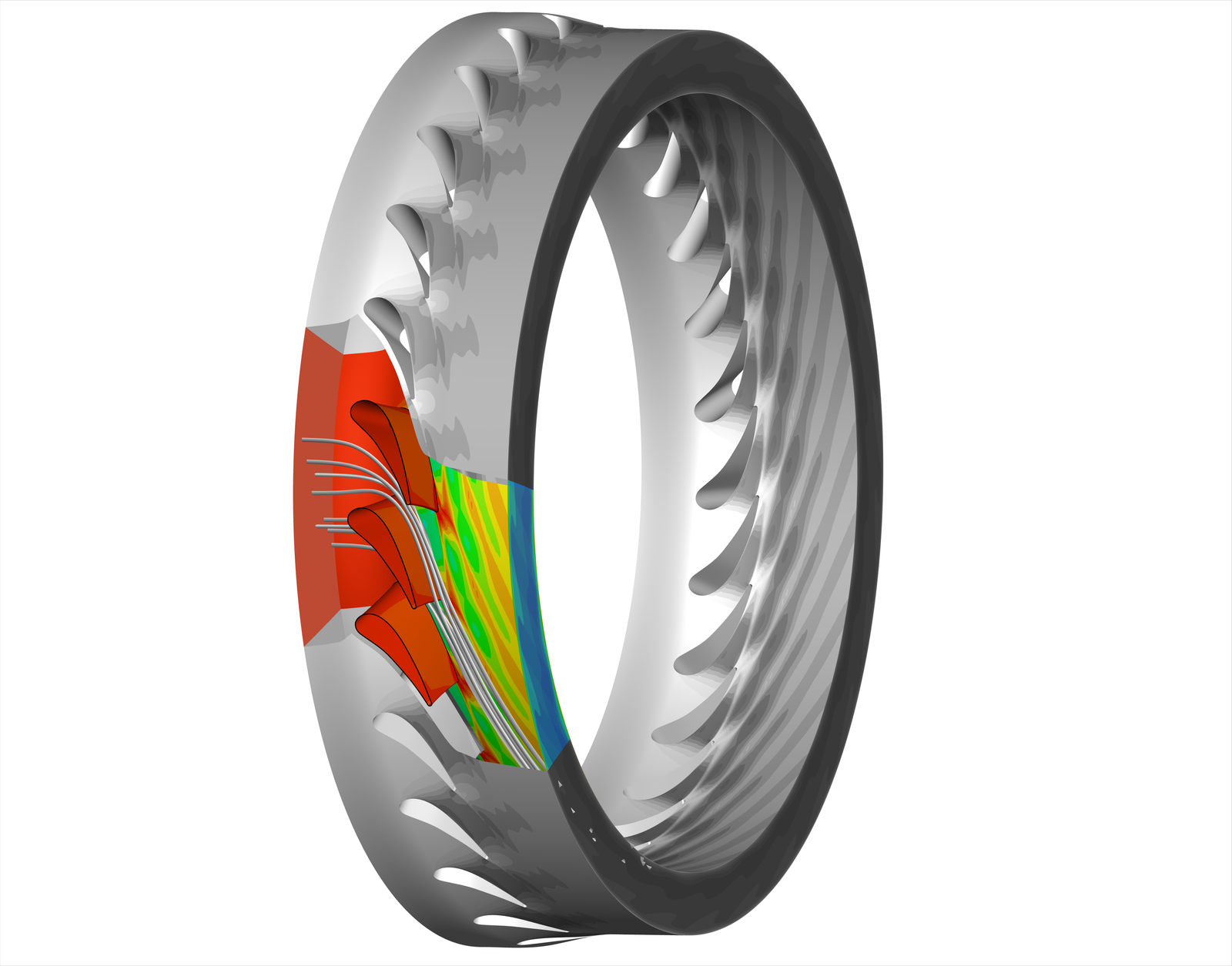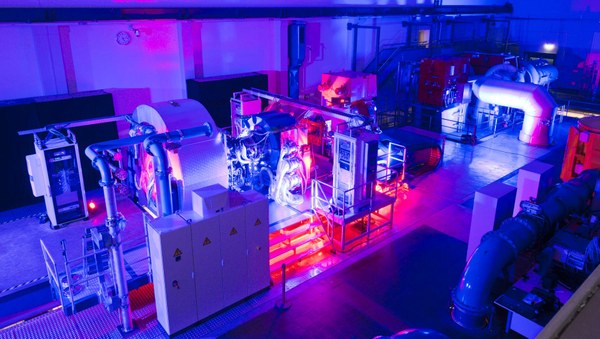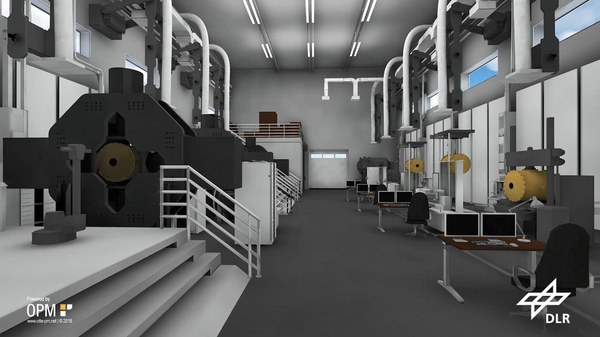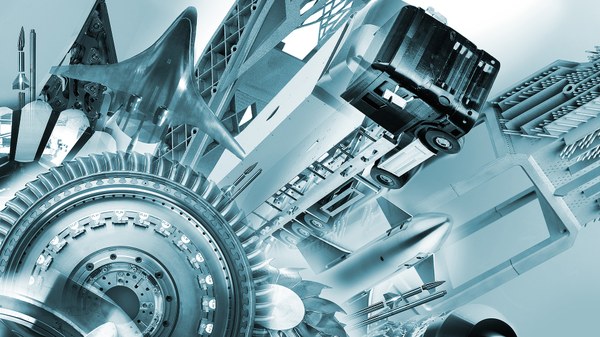3DCeraTurb – New materials and manufacturing technologies for the turbine



Duration: 2021-2024
How can we make todays advanced aircraft engines even more efficient and environmentally friendly? How can we achieve higher combustion temperatures and corrosion resistance and at the same time reduce the engine weight?
New materials and manufacturing technologies are an essential requirement. Since this year, scientists from six different institutes and facilities of the German Aerospace Center (DLR) have been working on the project 3DCeraTurb to develop novel turbine blades based on two of the most promising new classes of materials: additively manufactured metals and fiber reinforced ceramic matrix composites (CMC). With the completion of the design of a new guide vane geometry taking into consideration material and manufacturing specific constraints, the first important milestone has been reached.
The goals of the project 3DCeraTurb are to design and manufacture ceramic and metallic stator guide vanes for a high-pressure turbine, to experimentally investigate the blade performance in a wind tunnel and to evaluate performance, damage and lifetime for the later application in an aircraft engine. Therefore, DLR is pooling its capabilities and expertise in the areas of new materials, design, manufacturing, testing and assessment. On this basis, a CMC process chain consisting of design, manufacture, coating, validation and lifetime evaluation will be established at DLR.
Potential of new materials and cooling concepts
The major challenge for materials in the aircraft engine is the extreme heat as well as high temperature changes. To further increase the efficiency and effectiveness of aircraft engines, the trend goes towards ever higher temperatures. Such temperatures can only be achieved with new, more temperature-resistant materials and improved cooling concepts. "However, the manufacturing technology and material-specific component design also play a crucial role in making a potential new material usable for the desired application," says co-project leader Dr. Michael Welter.
Additive manufacturing of metals promises advantages in the realization of new, complex cooling concepts for engine components: The additive manufacturing technology enables novel cooling designs in the turbine overcoming restrictions on, for example, the shape and axis course of the film cooling holes of conventional manufacturing methods. In the project 3DCeraTurb, DLR is investigating new cooling concepts that are more effective and at the same time require less cooling air, thereby increasing the overall engine efficiency. On the other hand, ceramic materials, promise improved temperature resistance thanks to their excellent high-temperature properties. However, monolithic ceramics are not very suitable for use as structural components in aircraft engines because of their inherent brittleness. Due to their damage-tolerant properties, fiber-reinforced ceramics, so-called ceramic matrix composites (CMC), are of particular interest. SiC/SiC CMCs developed at DLR can currently withstand long-term stresses at temperatures up to 1,250 °C without cooling and hold further development potential for even higher temperatures. In addition, suitable protective coatings can reduce both the thermal load and corrosive attack. Also, the lower density of the fiber-reinforced ceramics compared to typical metal alloys creates the potential to reduce the weight of the aircraft engine and thus achieving an outstanding thrust-to-weight ratio.
DLR lays foundation for turbine blade manufacturing strategies
The project will also develop a continuous process chain and corresponding manufacturing strategy for the production of turbine blades for both CMC and additive manufacturing. Especially for CMC materials and their manufacturing, the complex blade geometry presents a significant challenge. The researchers are therefore focusing on transferring the manufacturing technology from flat sample level to complex full-scale components, which are expected to find application in aircraft engines in the future.
The CMC manufacturing data will also be integrated into a "high-fidelity" multiscale simulation so that lifetime prediction models can be adapted with respect to the manufacturing specifications. To ensure the traceability of all steps taken with the CMC material a data provenance model will be established. The DLR scientists are thus laying the first building block of a process chain in which the design, manufacturability and evaluation aspects of the two future material classes are represented in detail.
Experimental long-term tests enable lifetime assessment of blades
The investigation and evaluation of the manufactured turbine blades in terms of cooling efficiency and aerodynamic performance is carried out at the DLR Wind Tunnel for Straight Cascades at the Institute of Propulsion Technology. The scientists are also interested in the lifetime of the different materials. For this purpose, the degradation mechanisms of the base materials and various coatings are investigated in a temperature gradient test rig, in a thermal cycling test rig and in a high-temperature oven under the application of a corrosive water vapor atmosphere and compared with the results of the damage calculations. The investigations also provide important findings for the use of hydrogen in the engine, e.g. with regard to possible material embrittlement due to hydrogen corrosion.
At the end of the project, the technological maturity of the materials and technologies will be evaluated for the Ultra High Bypass Geared Turbofan (UHBR-GTF) engine designed at DLR, which corresponds to a long-range aircraft with a 2028 technology level and has been designed for a short runway length. "We have to make an assessment at the end about the technology maturity of the material concepts and to what extent they are suitable for the requirements of the aircraft engine," says project manager Dr.-Ing. Anna Petersen.





